This problem is not related to matplotlib, and also requires a definition of the "occupied area", which may vary depending on the kind of data you have. If you want a kind of non-strict approximation, here's one way to do it:
First, some test data:
import matplotlib
import matplotlib.pyplot as plt
import numpy
x = numpy.random.normal(size=10000)
y = numpy.random.normal(size=10000)
fig = plt.figure()
s = fig.add_subplot(1, 1, 1, aspect=1)
s.set_xlim(-4, 4)
s.set_ylim(-4, 4)
s.scatter(x, y)
fig.savefig('t1.png')

Calculate a 2D histogram to estimate the density of points. Note: the number of bins and the range is something you will have to adjust for your data.
hist, xedges, yedges = numpy.histogram2d(x, y, bins=20, range=[[-4, 4], [-4, 4]])
fig = plt.figure()
s = fig.add_subplot(1, 1, 1)
s.set_xlim(-4, 4)
s.set_ylim(-4, 4)
s.imshow(
hist, interpolation='nearest',
extent=[xedges[0], xedges[-1], yedges[0], yedges[-1]],
cmap=matplotlib.cm.viridis)
fig.savefig('t2.png')

Finally, find the places where the number of counts is greater than some predefined value. Note: you will have to adjust this threshold too, to get the desired distinction between "occupied" and "non-occupied" areas:
over_threshold = hist > 10
fig = plt.figure()
s = fig.add_subplot(1, 1, 1)
s.set_xlim(-4, 4)
s.set_ylim(-4, 4)
s.imshow(
over_threshold, interpolation='nearest',
extent=[xedges[0], xedges[-1], yedges[0], yedges[-1]],
cmap=matplotlib.cm.viridis)
fig.savefig('t3.png')
area = over_threshold.sum() * (xedges[1] - xedges[0]) * (yedges[1] - yedges[0])
print(area)

All the plotting, of course, is purely illustrative, and is not essential to the algorithm.




